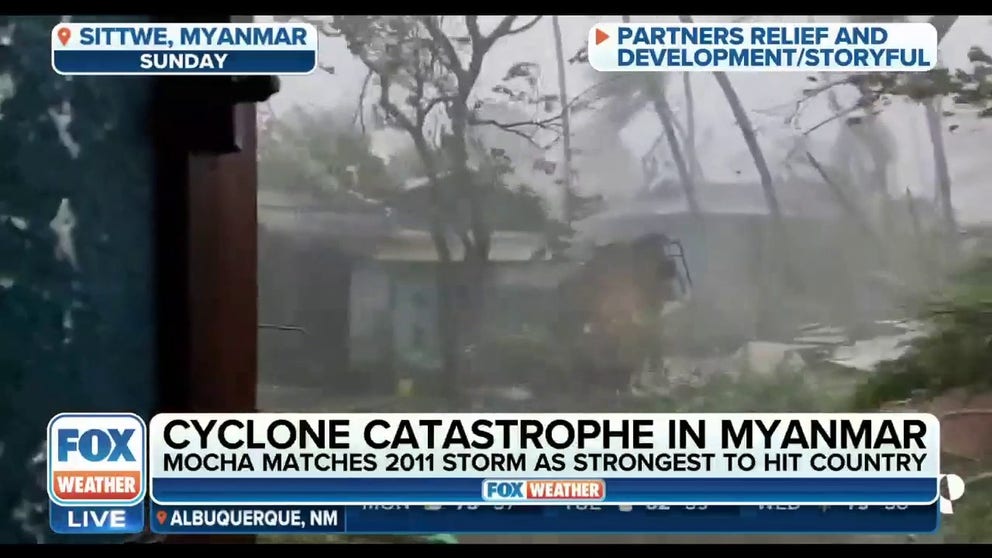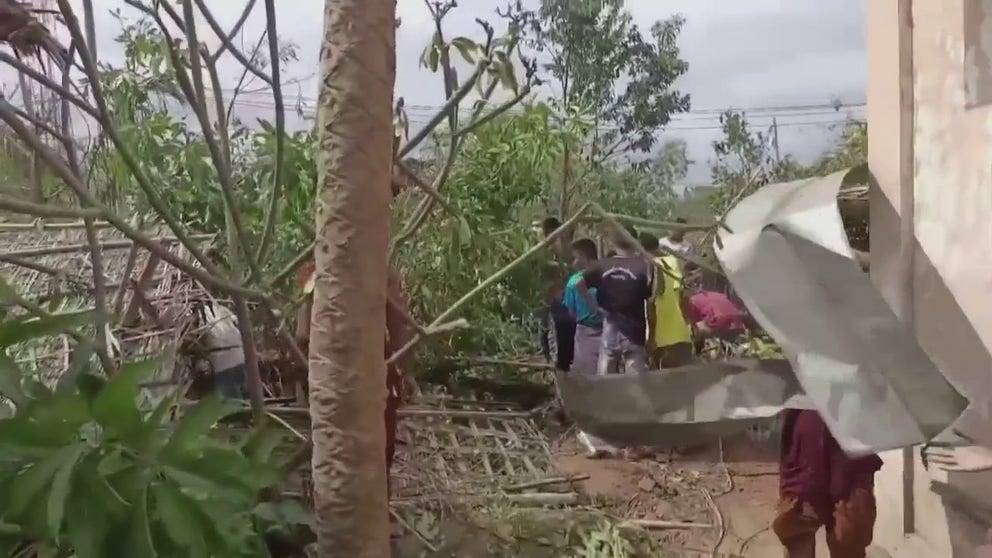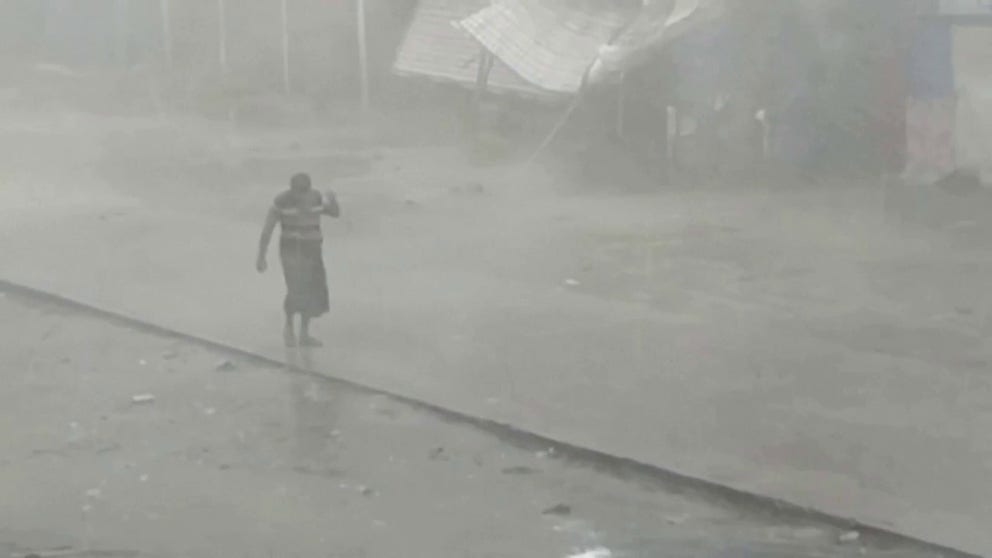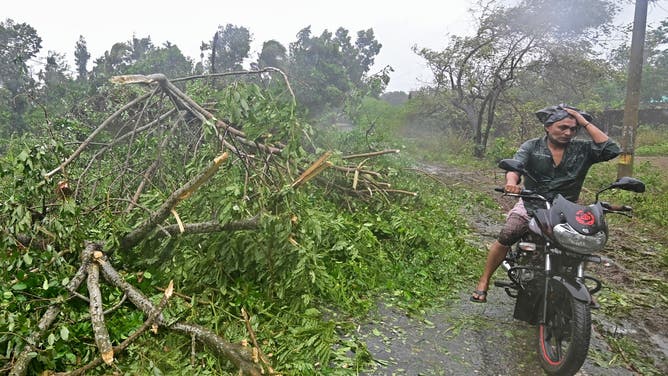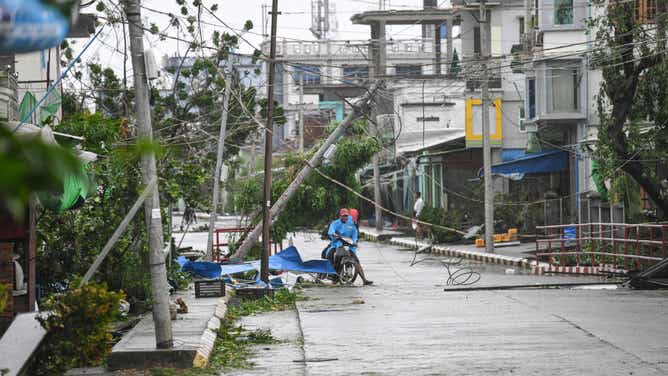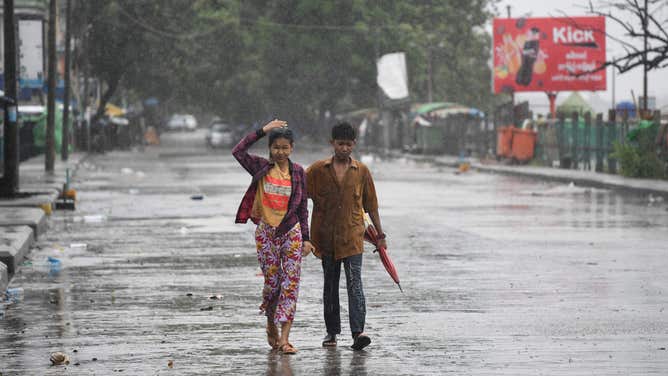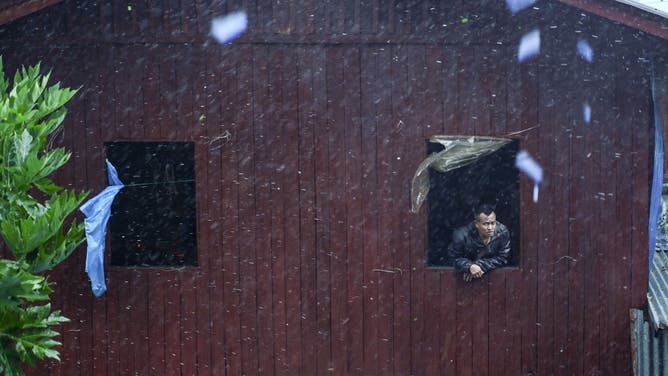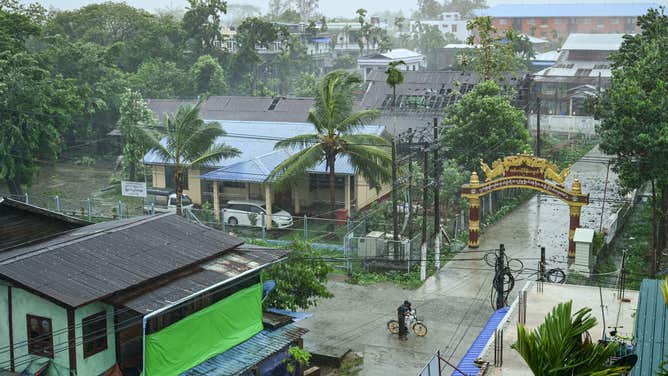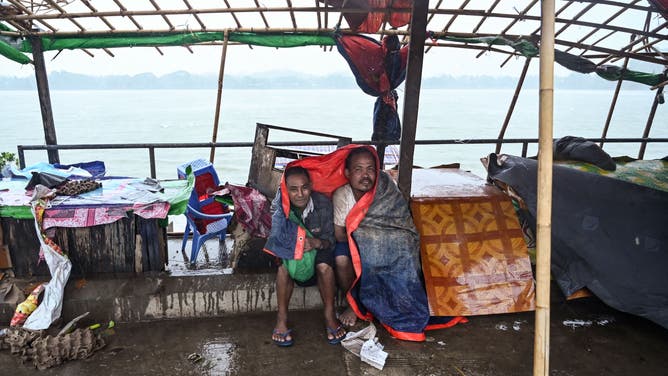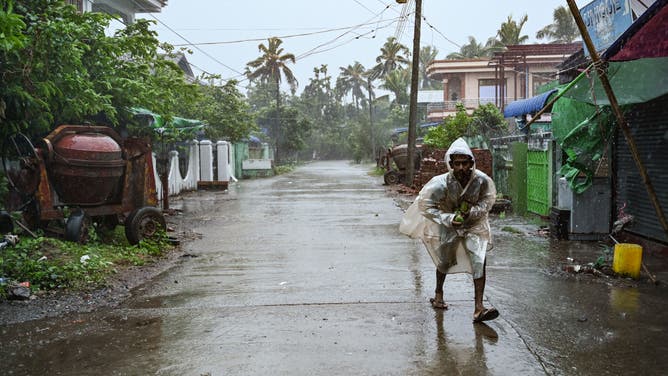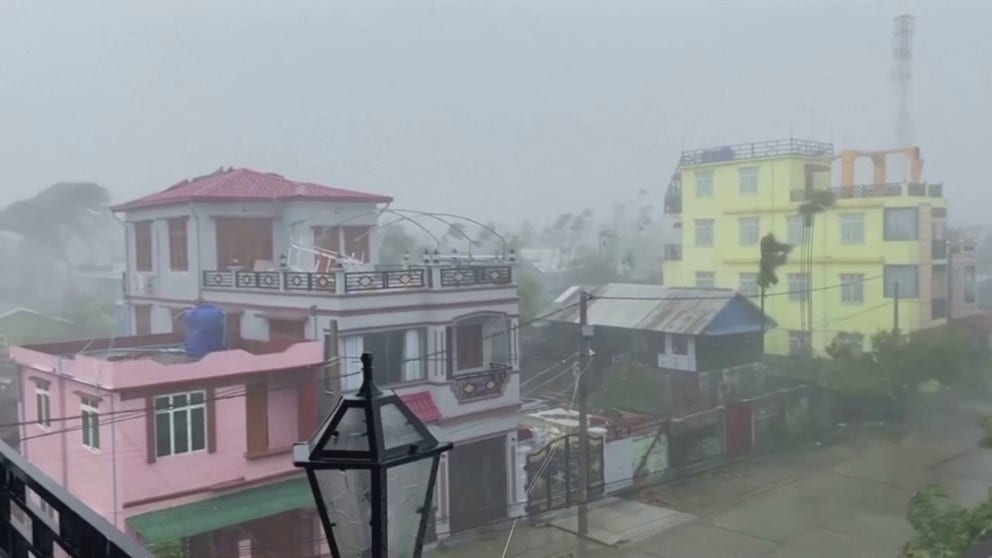Cyclone Mocha slams into Myanmar as one of the country’s most powerful cyclones on record
Cyclone Mocha was packing winds of 175 mph as it spun toward the coast on Sunday. Those wind speeds are the equivalent of a Category 5 hurricane on the Saffir-Simpson Hurricane Wind Scale.
Cyclone Mocha kills at least 6 people in Myanmar, several villages destroyed
At least six people have been killed since Cyclone Mocha made landfall in Myanmar on Sunday. Video shows the impact of the cyclone lashing Myanmar's coast.
SITTWE, Myanmar – At least six people are dead and hundreds are injured in the wake of powerful Cyclone Mocha, which left a trail of catastrophic destruction as it made landfall in Myanmar near the border with Bangladesh Sunday afternoon as one of the country’s most powerful cyclones on record.
Cyclone Mocha was packing winds of 175 mph as it spun toward the coast on Sunday. Those wind speeds are the equivalent of a Category 5 hurricane on the Saffir-Simpson Hurricane Wind Scale.
5 DIFFERENT NAMES FOR HURRICANES AROUND THE WORLD
Cyclone Mocha leaves extensive damage behind in Myanmar after making landfall
Footage shows damaged buildings and debris across a town in Myanmar’s western Rakhine state on Monday, one day after Cyclone Mocha made landfall. The roofs of some buildings belonging to a local monastery appeared to have been completely destroyed by the cyclone’s powerful winds. Residents along city streets could be seen removing debris and repairing damaged buildings.
More than 100,000 people in Myanmar’s Rakhine state were told to flee ahead of the monster storm, with many seeking shelter in monasteries, schools and religious sites, as others were told to get to higher ground to escape the onslaught of water rushing inland in addition to the torrential rainfall, according to an update from the United Nations Office for the Coordination of Humanitarian Affairs (OCHA).
While residents fled to safety, OCHA said humanitarian organizations were gearing up for a nationwide, large-scale emergency response to deal with the lasting effects of Cyclone Mocha.
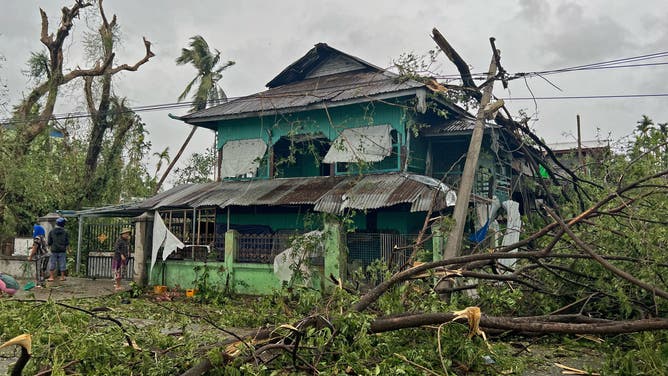
Local residents check the damages after Cyclone Mocha crashed ashore, in Kyauktaw in Myanmar's Rakhine state on May 14, 2023. Cyclone Mocha crashed ashore in Myanmar and southeastern Bangladesh on May 14, uprooting trees, scattering flimsy homes in Rohingya displacement camps and bringing a storm surge into low-lying areas.
(SAI AUNG MAIN/AFP / Getty Images)
The Associated Press (AP) reported that residents who didn’t heed the warnings to flee were forced to move to the roofs and higher floors of buildings while they awaited rescue. However, the AP added that those rescued were delayed due to the cyclone’s powerful winds and storm surge.
EXPANDED TROPICAL CYCLONE OUTLOOKS, NEW NAMES IN STORE FOR THE 2023 HURRICANE SEASON
Watch: Wind-driven rain whips through Sittwe, Myanmar, during powerful Cyclone Mocha
Residents in Sittwe, Myanmar, are seen braving the elements as wind-driven rain whips through a town as powerful Cyclone Mocha tears through the region on Sunday, May 14, 2023.
A storm surge is produced when winds from a tropical cyclone pile up the water and force it inland. The stronger the winds are, the higher the storm surge. A Category 1 hurricane typically produces a storm surge of 4 to 5 feet above normal tide levels. A Category 5 hurricane can lead to a storm surge of 18 feet or more.
The cataclysmic winds crumpled cell phone towers and destroyed electrical transformers, effectively cutting off communications to a large swath of the country.
OCHA, which described Cyclone Mocha as one of the country’s most powerful cyclones on record, said winds also knocked down power lines, uprooted trees and damaged and destroyed homes.
"Communications with the affected areas are currently limited after extensive damage to telecommunications towers during the cyclone," OCHA said in a statement. "Partners are reporting slow or non-existent internet, with zero connectivity in some areas which is hampering the collection of information on impacts."
WATER FROM HURRICANES, TROPICAL STORMS KILLS MORE IN U.S. THAN WIND
Watch: Powerful Cyclone Mocha slams into Myanmar
Video from Myanmar shows whipping winds, trees swaying and debris filling the air as powerful Cyclone Mocha made landfall on Sunday afternoon local time.
OCHA added that while the evacuations of displacement camps and residential areas took place before the cyclone’s arrival, it’s unclear if everyone in the storm’s path was able to reach evacuation sites.
"At least some of these evacuation centers were damaged by the strong winds at the peak of the cyclone," OCHA said.
Cyclone Mocha significantly weakened after slamming into the coast and spinning off farther inland, but heavy rain and winds were expected to continue over the coming days.
Myanmar, Bangladesh ‘highly susceptible’ to weather disasters

The volunteer helped an old woman move to take shelter in the Cyclone Shelter in Shahpori island on the outskirts of Teknaf, on May 14, 2023, ahead of Cyclone Mocha's landfall.
(Zabed Hasnain Chowdhury/NurPhoto / Getty Images)
The World Bank Group lists Myanmar and Bangladesh as being highly susceptible to weather disasters because of the terrain and poverty rates.
Cyclones are not rare along the Bay of Bengal, and both countries have been subject to some of the deadliest weather disasters on Earth.
In 1970, a tropical cyclone impacted several South Asia countries, including Bangladesh. More than 300,000 were killed, according to the World Meteorological Organization. In 2008, Tropical Cyclone Nargis killed more than 138,000 as flooding and a significant storm surge destroyed low-lying communities.
TROPICAL CYCLONE FREDDY KILLS MORE THAN 270 MAKING IT ONE OF AFRICA’S DEADLIEST STORMS
Unlike the Eastern Pacific and Atlantic basins, the North Indian Ocean cyclone season has no designated start or end date. Tropical cyclones are known to form year-round but are most common from May through November.
The Eastern Pacific’s hurricane season begins May 15, and the tropical weather season in the Atlantic Basin, which consists of the Caribbean Sea, the Gulf of Mexico and the Atlantic Ocean, starts June 1.
